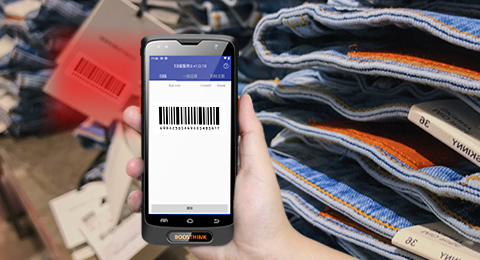400-9920-618
1.The historical origin of RFID technology
At the beginning of the 20th century, when the Second World War was in full swing, a British Air Force commander discovered during a mission that at a British airfield, radar could detect aircraft, but could not identify whether it was an Allied or an enemy. That is to say, if the enemy's fighter group is painted in British colors, the ground tower at the airport is likely to be detected only after the aircraft has reached a very low altitude or even after landing. This potential problem will threaten the airport and ground personnel. As a result, a new technology was born.
RFID is the abbreviation of "Radio Frequency Identification" in English. Simply put, an RFID chip is like a U disk, which can store specific data and send out radio frequency signals. The receiver can pick up the signal at a certain distance.
2. What is new retail
New retail was first proposed by Jack Ma, chairman of the board of directors of Alibaba Group, at the Alibaba Yunqi Conference in October 2016. He said that in the future, online and offline retail and modern logistics will be deeply integrated, and new retail should establish an "all-channel" joint approach, with physical stores, e-commerce, big data cloud platforms, and mobile Internet as the core, integration Online and offline, products, memberships, transactions, marketing and other data provide customers with a seamless experience across channels. In fact, the concept of new retail is to allow the overall retail industry to serve consumers more efficiently.

3. What kind of fusion and collision will RFID and new retail have in the future?
In July 2017, Jack Ma’s first unmanned supermarket settled in Hangzhou. The birth of unmanned supermarkets has changed the operation mode of traditional convenience stores and supermarkets, completely skipping the process of traditional cashiers and checkouts. This take-and-go process seems simple, and it uses technologies such as biometric autonomous perception, learning systems, and sensor fusion. It effectively solves the problem of consumer identification in the open space. And this innovative move, of course, the use of RFID technology is indispensable.
The value of RFID to retailers is reflected in five aspects: supply chain management, inventory management, in-store merchandise management, customer relationship management and safety management:
Supply chain management: This is the earliest use of RFID in the retail industry, and it is currently the most widely used field of RFID
Inventory management: The RFID applications include: using fixed or mobile readers to scan the goods in and out of the warehouse and warehouse shelves, and improve the work efficiency of goods in and out, picking and stocking. Improve inventory visibility to upstream suppliers, facilitate just-in-time supply, and connect with in-store shelf automatic replenishment systems. Timely replenishment to optimize inventory.
In-store commodity management: In this regard, most retail stores currently apply RFID to some easily stolen or valuable commodities.
Customer management: RFID is mainly used in self-checkout and improving customer's in-store shopping experience.
Security management: generally used in theft prevention and loss of goods, followed by RFID identification code instead of the original password to control the right to use IT equipment or the access rights of some important departments.
The application of RFID makes retailers more intelligent, informatized and automated in the management of these parts. It frees people from a large number of daily mechanized repetitive work, avoids excessive dependence on labor, and greatly improves the daily management and operation efficiency of retail enterprises.
In fact, RFID technology allows retailers to manage inventory more accurately, enabling physical stores to reduce the out-of-stock rate by 20%-30% and increase sales by 1%-2%, allowing retailers to lean production and reduce inventory. and more leeway in streamlining the workforce. Taking the daily data inventory of retail stores as an example, the original manual operation may take a day or more, and its accuracy cannot be guaranteed. After applying RFID technology, it can be completed in a few minutes or even less time. All data are recorded in detail.
In addition, RFID technology has unique advantages in terms of brand anti-counterfeiting, product traceability and the differentiated shopping experience (such as faster shopping settlement process) brought to customers by RFID technology. The detailed transaction data can be used to analyze the business trend and mining the purchase pattern, so as to provide a reliable data reference for the formulation of future business strategies. It is believed that RFID technology will play an increasingly important role in new retail in the future.